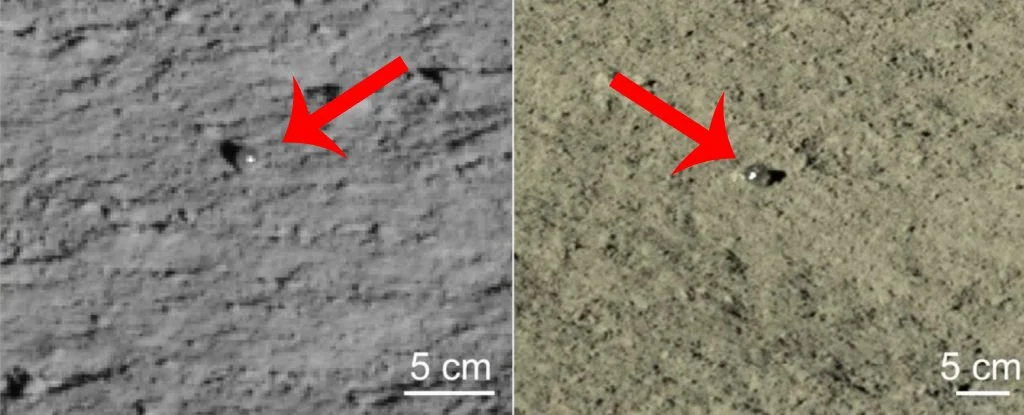Scientists Discover Two Glass Spheres On The Moon

One of the most exciting discoveries on the furthest side of the Moon has been discovered by China’s Yutu-2 spacecraft. Among the dry, gray dust of the Martian surface, the rover’s panorama camera detected two little, complete spheres of transparent glass that glistened.
Spherules of this kind may store information about the Moon’s past, including the makeup of its mantle and the location of impact events. Even though Yutu-2 was unsuccessful to gather compositional information, these naturally occurring lunar marbles may prove to be interesting study subjects in the future.
As it happens, the glass may be found in abundance on the Moon. Materializes as a result of the heating of silicate materials at high temperatures, and both of these constituents are abundantly accessible on Moon.
In lunar history, there was widespread volcanism, which resulted in the development of volcanic glass; in addition, collisions from smaller objects like meteorites cause great heat, which results in the creation of volcanic glass as well. Researchers from Sun Yat-sen University and the Chinese Academy of Sciences believe that the latter is what is responsible for the spheroids detected by Yutu-2.
It’s difficult to tell for sure, however, since much of the glass that has been detected on the Moon so far seems to be distinct from the spherules identified by Yutu-2. While spherules are abundant in the upper atmosphere, their average size is less than a millimeter in diameter.
When an asteroid hits the Earth, microscopic glass spherules are formed, creating such tremendous heat that the Earth’s crust melts and sprays into the atmosphere. The molten substance solidifies and falls back to the ground in the form of little glass beads.
They were discovered near newly created impact craters, which might indicate that they were generated as a result of lunar meteorite impacts. However, it is also conceivable that they were previously there and were buried under the surface of the moon and were only unearthed by impacts.
The team, on the other hand, feels that the most logical scenario is that they were made from a volcanic glass known as anorthosite, which melted and reformed into transparent circular globs after being shattered on contact.
0 comments